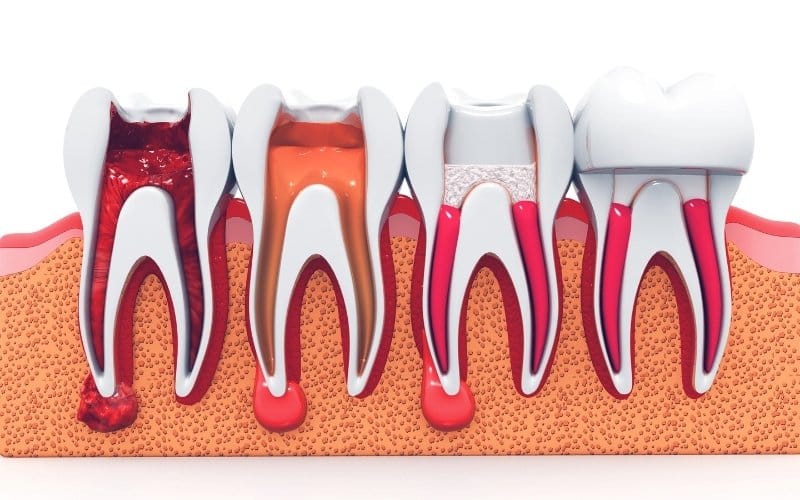
Ever had a toothache that just won’t quit? If so, you are not alone. Persistent tooth pain can often hint at deeper dental issues, one of which might require a root canal. Knowing the signs that point to needing a root canal could save you from severe pain, avoid emergency visits, and, importantly, preserve your natural tooth.
This post will walk you through the most common symptoms that signal the need for a root canal. Being proactive about these signs can make all the difference between simple treatment and a serious dental complication. Here is what to watch for to protect your dental health.
What Is a Root Canal?
A root canal is a dental procedure that treats infections inside a tooth’s root. Deep inside each tooth is a soft tissue called the pulp, which contains nerves and blood vessels. When bacteria invade this area—often due to deep decay, a cracked tooth, or trauma—the pulp becomes infected. Left untreated, this infection can spread and lead to abscesses, severe pain, and even bone loss.
During a root canal, the dentist removes the infected pulp, cleans the inner canals of the tooth, and then seals them to prevent future infections. Think of it as a way to save the natural tooth from extraction.
Without the procedure, the infected tooth could need to be removed, affecting both appearance and oral function. Root canals allow the tooth to remain functional, letting you chew and smile without worry.
So, if you are experiencing any warning signs, it is best to get checked as soon as possible. Catching the issue early can prevent further complications.
Top Signs You Might Need a Root Canal
1. Persistent Tooth Pain
Persistent, throbbing pain is often the first warning sign. Tooth pain that does not go away can range from mild to severe. It may start as a dull ache and progress to intense pain. Often, this pain can radiate to the jaw, ear, or other nearby teeth. Persistent pain typically means the tooth’s nerves are damaged, which may require a root canal.
2. Sensitivity to Hot and Cold
While mild sensitivity can be normal, prolonged sensitivity often signals nerve damage. If your tooth is highly sensitive to hot or cold foods, and the discomfort lingers even after the temperature returns to normal, this can indicate nerve inflammation. This is a common early sign of a deeper issue. Addressing it early can save you from a more complex dental problem.
3. Swollen or Tender Gums
Swelling and tenderness near the affected tooth are telltale signs of infection. An abscess or small bump can sometimes appear on the gum near the painful tooth. As the infection grows, this swelling may spread to the face or neck. Gum swelling, especially if it persists, is a red flag that should be evaluated immediately, as it can worsen over time.
4. Darkening or Discoloration of the Tooth
Infection can lead to tooth discoloration. When the pulp tissue inside the tooth dies, the tooth can turn gray or dark. While discoloration is not always painful, it is a sign that the tooth’s internal structure has been compromised. This change often comes with other symptoms like pain and swelling, indicating the need for a root canal.
5. Pain When Chewing or Touching the Tooth
Tenderness while eating or even when lightly touching the tooth is another indication of possible infection. This sensitivity is often due to inflammation or deep decay reaching the nerve area. Pain when chewing means the infection has likely affected the nerve. A root canal can remove the damaged tissue and restore function to the tooth.
6. Chipped or Cracked Tooth
A chipped or cracked tooth may seem minor but can lead to serious infection if left untreated. Exposing the pulp through a crack or chip creates an entry point for bacteria, increasing infection risk. Small chips can cause pain or sensitivity and may require a root canal to prevent worsening infection.
7. Prolonged Sensitivity Without an Obvious Cause
If unexplained sensitivity does not go away, it may indicate nerve damage or inflammation. Unlike regular sensitivity from external factors, this pain lingers without a clear cause. This could be due to pulp infection, which only a root canal can effectively address.
Why Early Diagnosis Matters?
Acting early on these signs can prevent the infection from spreading. An untreated infection can grow and cause an abscess, which can be painful and may lead to more extensive dental work. Early intervention allows for tooth-saving procedures, preserving both the function and appearance of your natural tooth.
With prompt diagnosis and treatment, you can often avoid extraction, keep your smile intact, and prevent the spread of infection. Prioritizing early diagnosis isn’t just about saving a tooth—it’s also about maintaining your overall health.
What to Expect During a Root Canal Procedure?
Are you wondering what a root canal involves? The procedure starts with numbing the affected area to keep you comfortable. Once numb, your dentist creates a small opening in the tooth and carefully removes the infected pulp from inside the canals.
After cleaning and shaping the canals, they seal them with a special material to prevent future infections. Finally, they’ll likely place a temporary filling until a permanent restoration, like a crown, can be added.
Modern advancements have made root canals far less painful and quicker than before. Most patients describe the sensation as similar to getting a filling. With efficient technology and improved anesthesia, the procedure is designed to be both comfortable and effective.
So, if you are anxious about the experience, know that dentists aim to make the process smooth and pain-free.
When to See a Dentist?
Do not wait to seek professional advice if you notice any of the symptoms we have discussed. Only a dentist can accurately determine if a root canal is needed. Waiting too long can worsen the infection and lead to more complex dental work, potentially involving tooth extraction.
If you are experiencing severe pain, swelling, or a bump on the gum, schedule an appointment immediately. These symptoms are urgent and should be addressed right away to avoid complications.
If you have been dealing with persistent tooth pain, sensitivity, or gum swelling, these signs could indicate a need for a root canal. Acting early can make all the difference between simple treatment and severe dental issues. Regular check-ups play a crucial role in catching problems before they escalate.
Keeping up with dental visits helps maintain your oral health and allows our dentists to spot any potential issues. Remember, your smile is worth protecting—do not ignore the signs.
